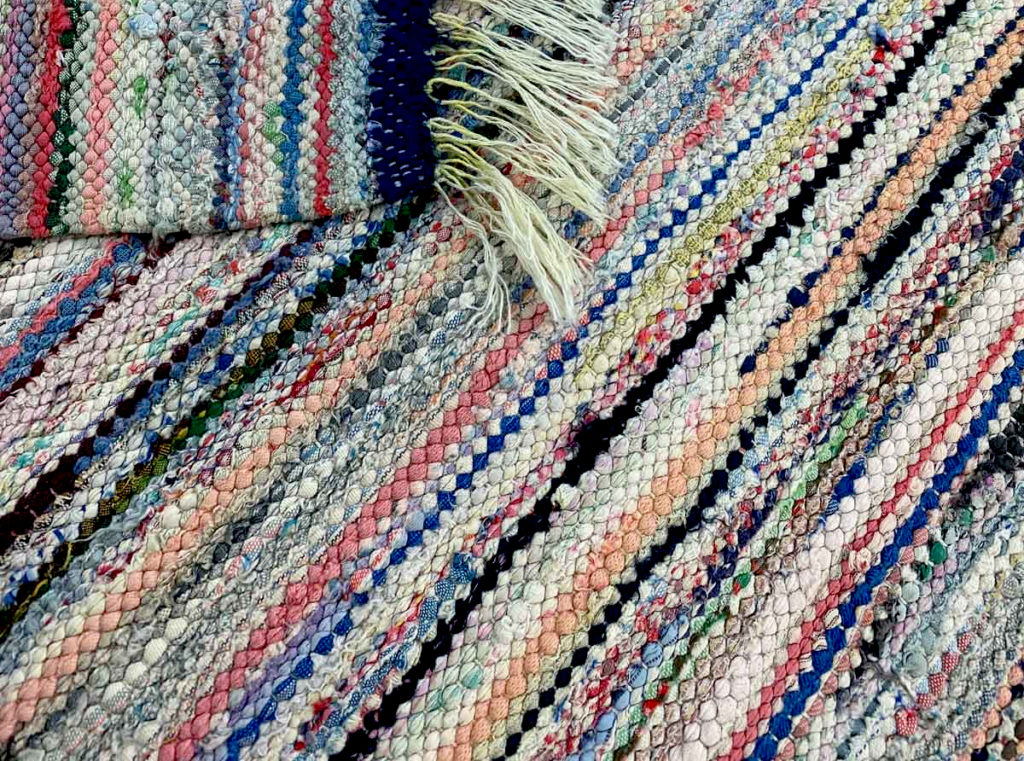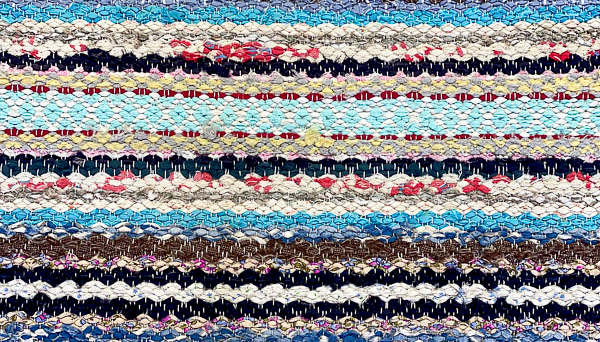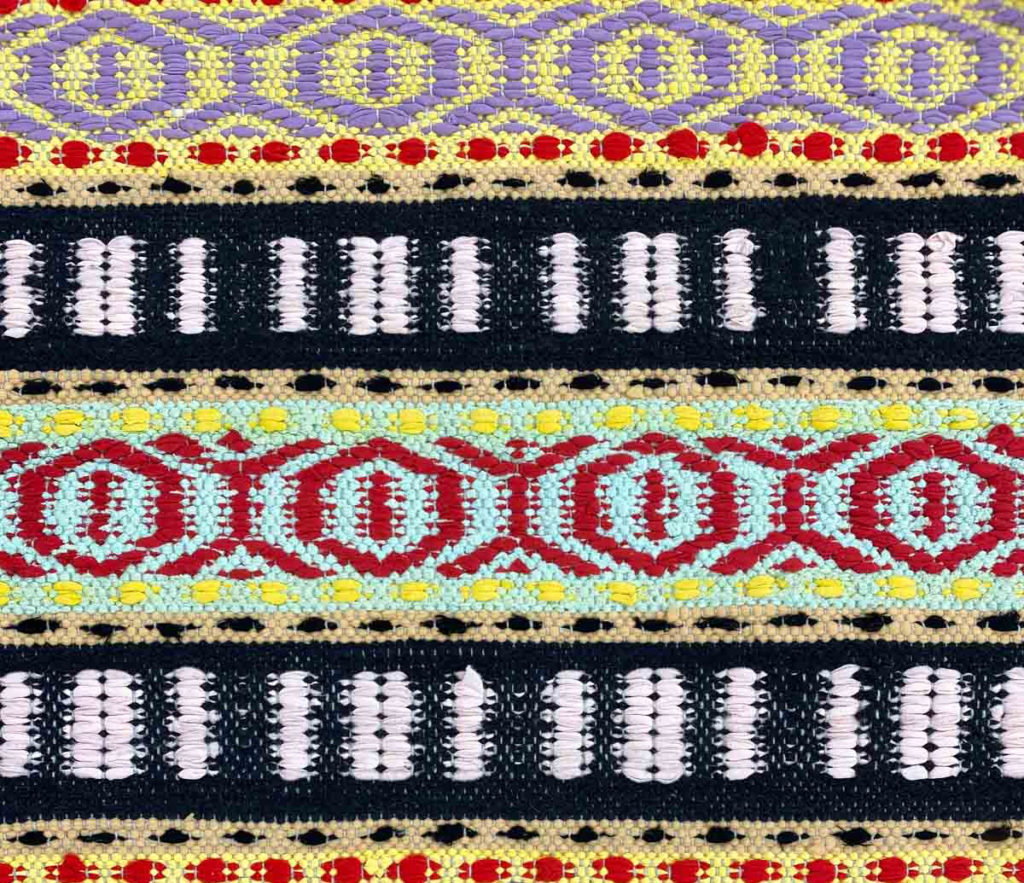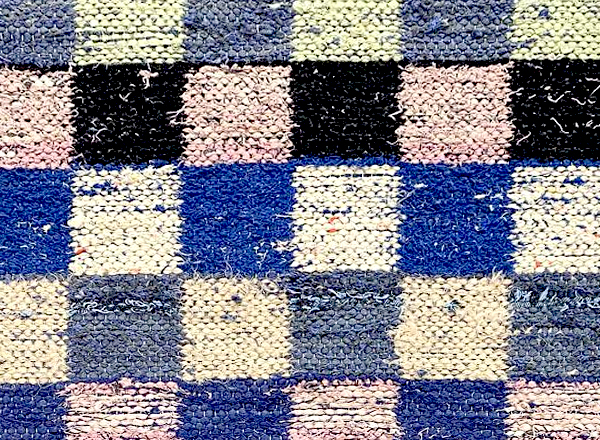The Weaving techniques
Tuskaft / Plain weave
Plain weave (also called tabby weave, linen weave or taffeta weave) is the most common and basic of the three fundamental types of textile weaves – the other two being satin weave and twill. It is strong and hard-wearing, used for both fashion as well as furnishing fabrics.
In plain weave, the warp and weft are aligned so they form a simple criss-cross pattern. Each weft pick interlaces over and under each warp end.
This technique is often used in the classic Swedish rag rugs, as it is easy to set up, strong and works well when using rags for filling in order to make the simple straight stripes often associated with the traditional rag rug.

Kypert / Twill
Some rag rugs are woven in twill – not that common though.
The warp forms a diagonal pattern when weaving in twill, like you can see in denim. Woven in this maner, the rug becomes much thicker and thus more firm than if woven in plain weave, the more common technique.

Rosengång / Rose path
A rag rug is not necessarily just a plain rug with simple, straight horisontal stripes.
‘Rose path’ is the name of a technique that was very popular in the 1950’s, when many rag rugs were woven entirely in rose path. But rose path appeared already in the early 1900’s, when it was used in borders to decorate rugs otherwise woven with the simpler plain weave.
Rose path can be explained as follows: ”Woven with or without a tabby ground, on three or four shafts, the pattern produces small diamonds or rose shaped patterns”.
Rag rugs woven in rose path, can be very intricate or sometimes just have a small section of the patterned design, while stripes are the main feature.

Checkered
Making checkered rag rugs calls for the double amount of rags/weft. As a result the rug is sturdy and extra heavy. It keeps its shape well and lays steady.



